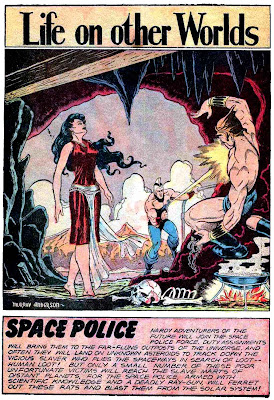According to the editorial in the first issue of Charlton Premiere, “The Spookman is Pat Boyette’s brain child and it too was mulled over and put aside until the advent of Charlton Premiere”. Despite a the poorly chosen name, The Spookman had an interesting shtick of time traveling to investigate what promised to be problems of the mystical variety – although his first story has him (or rather his assistant) indirectly responsible for the burning of Rome, all for the original desire to make a fast $10,000!
As far as I can tell this was The Spookman’s only appearance.
Click To Enlarge & Read









The Demon © DC Comics




























